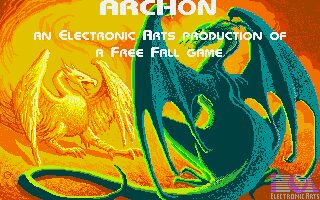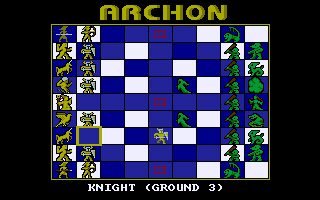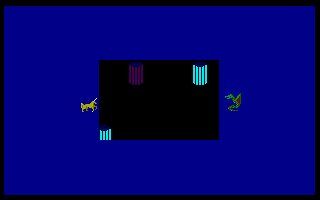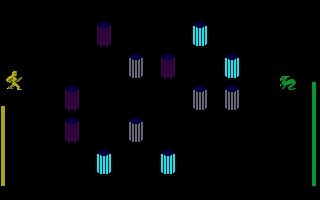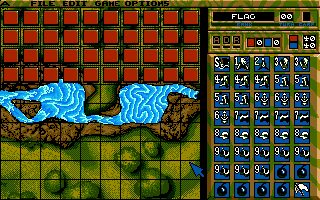Archon: The Light and the Dark is a strategic game developed by Free Fall Associates and originally released for the Atari 8-bit computers in 1983. Created by Paul Reiche III and Jon Freeman, this innovative title combines chess-like strategic gameplay with real-time combat sequences, creating a unique hybrid experience that challenged traditional gaming conventions.
The game achieved widespread popularity through its Commodore 64 version, which showcased the superior audiovisual capabilities of Commodore's machine and helped establish Archon as a classic of 1980s gaming. The enhanced graphics and sound on the C64 allowed the game's fantasy chess concept to truly shine, with more detailed character sprites and atmospheric audio that brought the mystical battlefield to life. It was subsequently ported to numerous other platforms including the Amiga, Apple II, MS-DOS, NES, and Atari ST, though the Commodore 64 version remains the most fondly remembered.
The core gameplay revolves around a chess-like board where players command armies of light and dark fantasy creatures, but with a crucial twist: when pieces occupy the same square, the conflict is resolved through real-time combat rather than automatic capture. This mechanic transforms what could have been a simple chess variant into something entirely original, requiring both strategic planning and arcade-style reflexes to succeed.
The strategic layer features asymmetrical armies with distinct strengths and weaknesses. The light side includes classic fantasy archetypes like unicorns, valkyries, and wizards, while the dark forces deploy dragons, banshees, and dark wizards. Each piece type possesses unique movement patterns on the board and different combat characteristics during battle sequences. The board itself changes dynamically as day cycles to night, affecting the relative strength of light and dark pieces and adding temporal strategy to the positioning game.
Combat sequences take place on small arena screens where players directly control their pieces in real-time battles. Each creature has distinct attack patterns, movement speeds, and special abilities that must be mastered to achieve victory. The unicorn fires straight-line energy beams, while the dragon breathes sweeping flame attacks. The banshee's wailing projectiles move in unpredictable patterns, and the golem's slow but powerful strikes can devastate opponents who fail to maintain proper distance.
The power point system adds another strategic dimension, allowing players to cast spells that can teleport pieces, heal units, or even resurrect fallen warriors. These magical abilities must be used judiciously, as power points accumulate slowly and poor timing can leave players vulnerable at crucial moments. The spell system creates additional tactical considerations beyond simple piece movement and combat prowess.
Compared to traditional strategy games like Chess or Checkers, Archon demands a broader skill set that encompasses both strategic thinking and real-time action capabilities. Unlike pure action games, success requires careful planning and positional awareness. This unique combination distinguishes Archon from other games of its era and helps explain its enduring appeal among diverse gaming audiences.
The game's influence on subsequent hybrid titles cannot be overstated. Later games like Warlords and Battle Chess drew inspiration from Archon's successful marriage of strategy and action, though few matched its elegant balance between the two gameplay styles. The real-time combat resolution system became a template for numerous strategy games that sought to make traditional abstract conflicts more visceral and engaging.
The audiovisual presentation, particularly on the Commodore 64, creates an atmospheric fantasy setting that enhances the gameplay experience. The character animations during combat are fluid and expressive, with each creature displaying distinct personality through their movement patterns and attack animations. The musical score complements the mystical theme effectively, while sound effects add impact to combat exchanges and spell casting.
The learning curve strikes an excellent balance between accessibility and depth. New players can quickly grasp the basic movement rules and combat mechanics, while experienced players discover subtle strategic nuances in piece positioning, timing attacks with the day/night cycle, and managing power point resources. This scalability helped Archon appeal to both casual gamers and dedicated strategy enthusiasts.
Archon: The Light and the Dark represents one of gaming's most successful experiments in genre fusion, creating a template that influenced countless subsequent titles while remaining uniquely engaging in its own right. The game's combination of strategic depth with immediate action continues to feel fresh and innovative, demonstrating that truly original game design can transcend the technological limitations of its era to create lasting entertainment value.

